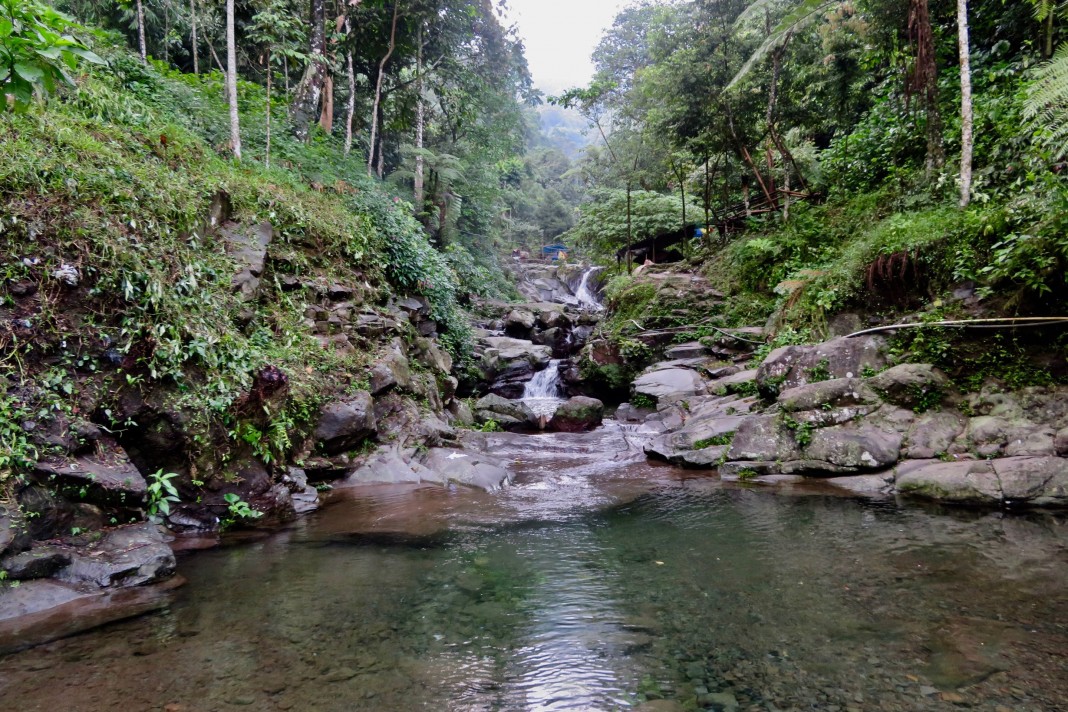Introduction
Despite this wealth of treasures, most travellers arrive in the seething capital of Jakarta and hightail it to the more popular and well-known region of Yogyakarta in Central Java. However, if you have a little time up your sleeve, West Java is well worth a detour from the well-trodden path to explore this little visited part of Indonesia.
Getting around
A word of warning—time and patience are both required when travelling in West Java. Despite it being one of the most densely populated areas anywhere, the infrastructure can be somewhat lacking and travel is often painfully slow and at times not A to B, and instead A to B to C to D to Etc., nevertheless, your perseverance will be rewarded. If you’re travelling with a surfboard, don’t be surprised when you’re charged extra to bring the board with you.
When to go
West Java’s wet season runs roughly late October to late February. During this time, road travel is fine on the major roads, but landslides do happen and there can by trip disruptions. If you’ve got a date with a long haul international flight, be sure to allow enough wiggle room to make sure you don’t miss it. Once the wet season finishes, West Java blossoms, with lush rolling hills and clear skies delivering spectacular volcanic views. Costal areas can feel very hot during the day, but evening temperatures, particularly in the higher inland, can drop at night. If you are planning on climbing volcanoes, bring protective cold weather gear—even in dry season.
Day by Day
Day 1 and 2: Bogor
Jakarta is not everyone’s cup of Bintang, and while we are fans of “the big durian”, we can appreciate that it’s far from a tourist paradise. Luckily, those who don’t share our penchant of the city can sideline it completely and jump on a bus directly from the airport and in less than two hours (fingers crossed!) be in the West Javanese city of Bogor to begin a jaunt around the region—less time than it sometimes takes in the traffic to central Jakarta itself. Assuming a morning arrival in Jakarta you should be checked in, settled and washed up in Bogor just in time to head out for lunch.

Once fed, it is time to head to a world renowned 200-year-old botanical gardens, the prime reason to visit the city. Most of Bogor’s accommodation surrounds the gardens or is a short walk or minibus ride away. The chaotic surrounding streets and traffic may seem daunting, but once inside the green zone it’s a veritable haven. You can spend a half day or more wandering the expansive park that incorporates a dusty zoology museum, presidential palace, greenhouses and a colonial Dutch cemetery along with the formal gardens. Take a breather at the Grand Garden Cafe within, and if you have time, you could check out a traditional puppet workshop nearby.
The evening offers the opportunity to discover some of Bogor’s great street food—try toge goreng, or if it’s raining head into one of the many local restaurants, then enjoy a quiet beer overlooking the lights of the valley from Salak Sunset Cafe.

The next day, get out of town to Gunung Halimun-Salak National Park. The park covers a large swath of West Java, but is easily accessed from Bogor and although you could spend days trekking and climbing the two peaks for which the park is named, a couple of hours will allow time for a wander in the rainforest and a dip in one of the pristine mountain pools— you may be lucky to spot some wildlife too. Close at hand, stop by the picturesque Hindu temple, Pura Parahyangan Agung, and on your way back to town make a short detour to visit a traditional foundry and watch gongs beaten into shape.
... Travelfish members only (Full text is around 1,400 words.)Log in to Travelfish
Please sign in to read the rest of this page. The full text is around 1,400 words.
Become a Travelfish member
Choose from $10 week-long through to a lifetime membership.
Reviewed by
Sally Arnold
Sally spent twelve years leading tourists around Indonesia and Malaysia where she collected a lot of stuff. She once carried a 40kg rug overland across Java. Her house has been described as a cross between a museum and a library. Fuelled by coffee, she can often be found riding her bike or petting stray cats. Sally believes travel is the key to world peace.
